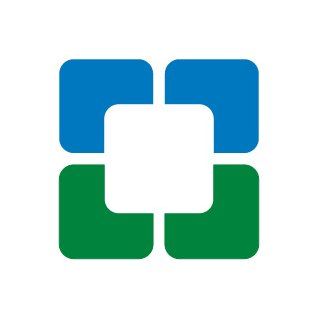预约演示
更新于:2025-04-01

V-Wave Ltd.
更新于:2025-04-01
概览
关联
5
项与 V-Wave Ltd. 相关的临床试验NCT04729933
Implantation of a Permanent Interatrial Shunt to Reduce Left Atrial Filling Pressures Following MitraClip: The V-Wave Shunt MitraClip Study
This is an investigator initiated, prospective study to demonstrate the safety and feasibility of implantation of the V-Wave Interatrial Shunt System (herein called the "V-Wave Shunt" in patients immediately following percutaneous mitral valve repair using the MitraClip system.
开始日期2021-03-11 |
申办/合作机构 |
NCT03838445
RELIEVE-PAH TRIAL: REducing Right ventricuLar faIlure With thE V-waVe Shunt in Pulmonary Arterial Hypertension
The objectives of the RELIEVE-PAH study are to obtain first-in-human experience with the study device in patients with severe pulmonary arterial hypertension, including evidence of initial safety, device performance and possible signals of clinical effectiveness.
开始日期2020-02-14 |
申办/合作机构 |
NCT03499236
RELIEVE-HF TRIAL: REducing Lung congestIon Symptoms Using the v-wavE Shunt in adVancEd Heart Failure
The objective of the RELIEVE-HF study is to provide reasonable assurance of safety and effectiveness of the V-Wave Interatrial Shunt System by improving meaningful clinical outcomes in patients with New York Heart Association (NYHA) functional Class II, Class III, or ambulatory Class IV heart failure (HF), irrespective of left ventricular ejection fraction, who at baseline are treated with guideline-directed drug and device therapies.
开始日期2018-09-19 |
申办/合作机构 |
100 项与 V-Wave Ltd. 相关的临床结果
登录后查看更多信息
0 项与 V-Wave Ltd. 相关的专利(医药)
登录后查看更多信息
1
项与 V-Wave Ltd. 相关的文献(医药)2024-12-10·CIRCULATION
Interatrial Shunt Treatment for Heart Failure: The Randomized RELIEVE-HF Trial
Article
BACKGROUND::
An interatrial shunt may provide an autoregulatory mechanism to decrease left atrial pressure and improve heart failure (HF) symptoms and prognosis.
METHODS::
Patients with symptomatic HF with any left ventricular ejection fraction (LVEF) were randomized 1:1 to transcatheter shunt implantation versus a placebo procedure, stratified by reduced (≤40%) versus preserved (>40%) LVEF. The primary safety outcome was a composite of device-related or procedure-related major adverse cardiovascular or neurological events at 30 days compared with a prespecified performance goal of 11%. The primary effectiveness outcome was the hierarchical composite ranking of all-cause death, cardiac transplantation or left ventricular assist device implantation, HF hospitalization, outpatient worsening HF events, and change in quality of life from baseline measured by the Kansas City Cardiomyopathy Questionnaire overall summary score through maximum 2-year follow-up, assessed when the last enrolled patient reached 1-year follow-up, expressed as the win ratio. Prespecified hypothesis-generating analyses were performed in patients with reduced and preserved LVEF.
RESULTS::
Between October 24, 2018, and October 19, 2022, 508 patients were randomized at 94 sites in 11 countries to interatrial shunt treatment (n=250) or a placebo procedure (n=258). Median (25th and 75th percentiles) age was 73.0 years (66.0, 79.0), and 189 patients (37.2%) were women. Median LVEF was reduced (≤40%) in 206 patients (40.6%) and preserved (>40%) in 302 patients (59.4%). No primary safety events occurred after shunt implantation (upper 97.5% confidence limit, 1.5%;
P
<0.0001). There was no difference in the 2-year primary effectiveness outcome between the shunt and placebo procedure groups (win ratio, 0.86 [95% CI, 0.61–1.22];
P
=0.20). However, patients with reduced LVEF had fewer adverse cardiovascular events with shunt treatment versus placebo (annualized rate 49.0% versus 88.6%; relative risk, 0.55 [95% CI, 0.42–0.73];
P
<0.0001), whereas patients with preserved LVEF had more cardiovascular events with shunt treatment (annualized rate 60.2% versus 35.9%; relative risk, 1.68 [95% CI, 1.29–2.19];
P
=0.0001;
Pinteraction
<0.0001). There were no between-group differences in change in Kansas City Cardiomyopathy Questionnaire overall summary score during follow-up in all patients or in those with reduced or preserved LVEF.
CONCLUSIONS::
Transcatheter interatrial shunt implantation was safe but did not improve outcomes in patients with HF. However, the results from a prespecified exploratory analysis in stratified randomized groups suggest that shunt implantation is beneficial in patients with reduced LVEF and harmful in patients with preserved LVEF.
REGISTRATION::
URL:
https://www.clinicaltrials.gov
; Unique identifier: NCT03499236.
12
项与 V-Wave Ltd. 相关的新闻(医药)2024-10-15
J&J Terminates RA and Leukemia Drug From Pipeline
iStock,
yuelan
Sales of Johnson & Johnson’s oncology drugs jumped nearly 19% in the third quarter, driven by cancer treatment Darzalex which brought in more than $3 billion.
Johnson & Johnson
released its third-quarter earnings report
on Tuesday, touting strong revenue growth that exceeded Wall Street’s expectations—alongside a more optimistic full-year outlook.
In Q3, the pharma generated nearly $22.5 billion in sales, representing 5.2% year-over-year growth—excluding the impact of translational currency—and beating the consensus estimate of nearly $22.2 billion. Adjusted earnings per share (EPS), on the other hand, dipped 9% year-on-year to $2.42, though still outperforming the $2.21 EPS that analysts were expecting, according to
Seeking Alpha
.
J&J’s Innovative Medicine unit continued to be the main driver of its business, bringing in around $14.6 billion in Q3, accounting for around two-thirds of its total sales.
Oncology remained J&J’s most lucrative segment, which
brought in $5.38 billion
in sales in the quarter. The multiple myeloma therapy Darzalex was the pharma’s top asset with more than $3 billion in reported sales worldwide. Jefferies analyst Peter Welford in a note to investors pointed out that Darzalex’s sales beat consensus expectations by 2%.
Other high-performing assets in Q3 included the antidepressant nasal spray Spravato, which saw a nearly 55% jump in sales, and the CAR T therapy Carvykti , which surged almost 88% in the quarter. The prostate cancer treatment Erleada was also notable, growing 25.4% year-over-year to earn $790 million worldwide.
While immunosuppressive drug Stelara also contributed heavily to J&J’s overall Q3 sales—raking in nearly $2.7 billion in the quarter—the blockbuster therapy is already seeing revenue erosion from mounting biosimilar competition. Its revenue was hit with a 6.6% decline from the same period in 2023.
Guggenheim Securities analyst Vamil Divan said in an investor note that J&J’s strong Q3 showing is “mainly due to better-than-expected performance by assets such as Darzalex, Carvykti and Erleada,” adding that the miss in the pharma’s medtech division only partially offset the sales of its Innovative Medicine unit.
“We do not believe the 3Q 2024 results fundamentally change the overall JNJ story, with investors likely focusing more on the performance of current growth drivers,” Divan wrote, referring to assets such as Carvykti, Spravato and the anti-inflammatory antibody Tremfya.
Looking forward, J&J raised its full-year operational sales guidance to $89.4 billion to $89.9 billion, up from a previous range of $89.2 billion to $89.6 billion. However, adjusted operational EPS was lowered to $9.86 to $9.96, from a previous forecast of $10.00 to $10.00, to accommodate dilution from the recently closed acquisition of medical device maker V-Wave.
并购财报IPO带量采购
2024-09-05
GALWAY, Ireland--(
BUSINESS WIRE
)--
WhiteSwell
, a company pioneering a new paradigm in the treatment of acute decompensated heart failure (ADHF), today announced the appointments of Ric Cote to its board of directors and Sergio Shkurovich as vice president of clinical affairs.
Ric Cote brings over three decades of experience in the medical device industry to the board. He is currently the CEO of Channel Medsystems, where he leads a team committed to empowering women to take control of their health. Prior to this role, he was executive vice president of global sales and business development for Conceptus, which was acquired by Bayer in 2013. Earlier in his career, he oversaw sales and marketing at Influence Medical, which was acquired by AMS in 2000.
Sergio Shkurovich joins WhiteSwell with more than 20 years of experience in clinical strategy and execution. He previously led clinical research programs for V-Wave, Medtronic and St. Jude Medical. During his career, Sergio has been intimately involved with pursuing therapies to manage heart failure, including implantable pressure sensors and interatrial shunts. At V-Wave, he led the development of the RELIEVE-HF study, a rigorous RCT evaluating the safety and efficacy of interatrial shunting. He earned his Ph.D. and an MBA from Northwestern University.
“
We are thrilled to welcome Ric Cote and Sergio Shkurovich to our team. They bring a wealth of experience and visionary leadership to WhiteSwell,” said Eamon Brady, WhiteSwell CEO. “
Sergio’s deep clinical knowledge and strategic vision, paired with Ric’s extensive industry expertise, will significantly strengthen our leadership team and our capabilities as we develop our therapy to enhance tissue decongestion by supporting the lymphatics in order to improve outcomes for patients with ADHF.”
About WhiteSwell
WhiteSwell is a patient-focused company dedicated to improving treatment of acute decompensated heart failure (ADHF), a primary cause of repeat hospitalization and emergency room visits. A privately held company, WhiteSwell is headquartered in Galway, Ireland. For more information visit
www.whiteswell.com
.
高管变更并购
2024-08-23
In the specialized field of medical devices, Johnson & Johnson has always been an industry leader. In recent years, Johnson & Johnson has continuously increased its investment in the medical device sector, and continued to enhance its competitiveness and market share in the field of cardiovascular disease treatment through a series of frequent mergers and acquisitions.
Specifically, on August 20 this year, Johnson & Johnson announced a major news that it acquired V-Wave, an Israeli cardiac medical device company, for a high price of 12.133 billion yuan. This is Johnson & Johnson's fourth large-scale acquisition in the cardiovascular field in the past three years, which fully demonstrates the company's ambition and strategic layout in this area.
Founded in 2009, V-Wave is focused on developing cardiovascular implantation technology for heart failure with reduced ejection fraction (HFrEF). Its flagship product, the V-Wave Ventura Shunt, is an innovative hourglass implant with a unique Venturi tube design that significantly improves blood transfer efficiency, reduces shunt size, and uses biocompatible materials to ensure long-term unobtrusivity. This product has received breakthrough device recognition from the US Food and Drug Administration (FDA) and CE certification in Europe in 2019 and 2020, respectively, and has attracted much attention from the industry.
The V-Wave Ventura Shunt is expected to be the first device of its kind to market and meet the unmet needs of the approximately 800,000 HFrEF patients in the United States each year, Johnson & Johnson said. This is one of the important reasons why Johnson & Johnson likes this product.
From a larger perspective, this acquisition is undoubtedly an important strategic deployment for Johnson & Johnson in the cardiovascular field. In the past three years, Johnson & Johnson has invested more than $30 billion in four cardiovascular mergers and acquisitions. These include Abiomed, which was acquired in 2022 for $16.6 billion, and Shockwave, which was acquired in April this year. It can be said that Johnson & Johnson is actively building its dominance in the global cardiovascular medical device field.
With the launch of innovative products such as V-Wave Ventura Shunt, and the integration of businesses from acquisitions such as Abiomed and Shockwave, Johnson & Johnson's cardiovascular revenues and profits are expected to grow further. We have reason to believe that in the near future, Johnson & Johnson can truly become a leader in the global medical device field.
并购
100 项与 V-Wave Ltd. 相关的药物交易
登录后查看更多信息
100 项与 V-Wave Ltd. 相关的转化医学
登录后查看更多信息
组织架构
使用我们的机构树数据加速您的研究。
登录
或

管线布局
2025年04月29日管线快照
无数据报导
登录后保持更新
药物交易
使用我们的药物交易数据加速您的研究。
登录
或

转化医学
使用我们的转化医学数据加速您的研究。
登录
或

营收
使用 Synapse 探索超过 36 万个组织的财务状况。
登录
或

科研基金(NIH)
访问超过 200 万项资助和基金信息,以提升您的研究之旅。
登录
或

投资
深入了解从初创企业到成熟企业的最新公司投资动态。
登录
或

融资
发掘融资趋势以验证和推进您的投资机会。
登录
或

Eureka LS:
全新生物医药AI Agent 覆盖科研全链路,让突破性发现快人一步
立即开始免费试用!
智慧芽新药情报库是智慧芽专为生命科学人士构建的基于AI的创新药情报平台,助您全方位提升您的研发与决策效率。
立即开始数据试用!
智慧芽新药库数据也通过智慧芽数据服务平台,以API或者数据包形式对外开放,助您更加充分利用智慧芽新药情报信息。
生物序列数据库
生物药研发创新
免费使用
化学结构数据库
小分子化药研发创新
免费使用
